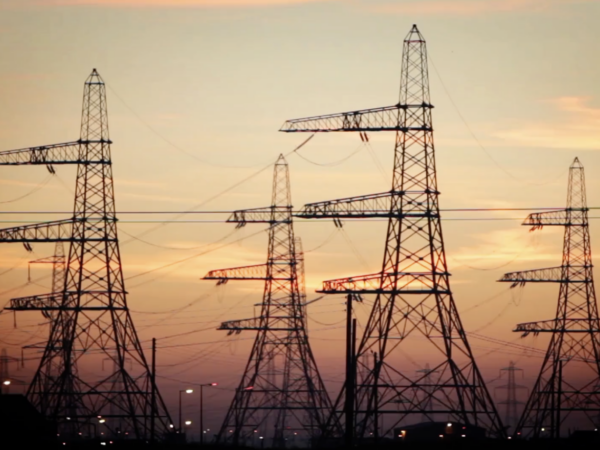
Out of the tragedy that is COVID-19 can come opportunities to improve our lives, our workspace and our environment.
That includes softening the impact we have on natural habitat.
That’s the view of veteran Great Lakes executive Cameron Davis who says, like businesses in big cities that are assessing their space needs, we should pause and assess our impact on the environment.

Cameron Davis (Photo by Ted Glasoe)
Chicago-based Davis has a long career advocating for the region’s waterways. He led the not-for-profit Alliance for the Great Lakes and spent eight years as President Barack Obama’s senior adviser to the U.S. EPA administrator for Great Lakes restoration programs.
Davis is currently a commissioner for Chicago’s Metropolitan Water Reclamation District.
In an interview with Great Lakes Now Senior Correspondent Gary Wilson, Davis touched on the impact of climate change on our waterways and the imperative that we include the landscape as part of our infrastructure. He also said it’s time for a big initiative to “greenify” our water’s edges.
The following interview was conducted via phone and email and edited for length and clarity.
Great Lakes Now: Recent heavy rains contributed to the collapse of two dams in Michigan that displaced ten thousand people. Chicago and Milwaukee were forced to release billions of gallons of wastewater to Lake Michigan, a type of event that had been declining. Is this the new normal, or an aberration?
Cameron Davis: I’m not a fan of the term ‘new normal.’ It suggests that we find some kind of a new sense of static. I don’t think that’s what we are seeing right now. The normal keeps changing.
We are going to be impacted by climate change here for a long time. One of the ways that we see climate change expressing itself most vividly is through our waterways. I am concerned that after a long time of seeing declining river reversals, we are seeing them on the rise again because of climate change.
GLN: Federal regulators had warned that the dams in Midland were a significant threat, and in 2018 pulled the power generation license of one of them. Michigan has a staff of two to monitor a thousand mostly aged dams. Why don’t we invest in regulation and enforcement?
CD: The Trump administration has rolled back enforcement and we’re starting to see the aftermath of those rollbacks. We should be investing in making sure that we have the right rules and that everybody is playing by them because it’s unfair to those who do play by the rules.
Read more about the Midland dams breach on Great Lakes Now:
Midland Flooding: Climate change and rains exacerbate dam infrastructure issues
More Than Dow: Chemicals, contaminants and untreated sewage all washed out by Midland dam breaks
Rescuing History: Museum experts across Michigan race to save the Midland archive
GLN: COVID-19 is the backdrop for everything we do these days. With states and cities on the cusp of opening things up, businesses in big downtown areas like Chicago are re-examining how much space they really need. Does COVID-19 offer a chance to look at conservation issues like land use?
CD: COVID-19 offers us a chance to reassess how we go about our lives in ways that have a lighter impact on the natural world.
It’s very possible we’ll see more people working from home rather than having a separate office. It’s possible we won’t have as much traffic on the roads. All of those things are dynamics that could help in terms of reducing hard surfaces on our landscape. To help improve air and water quality. To help improve habitat.
GLN: In the early 2000s you were part of region wide initiatives that led to the Great Lakes restoration program and the Great Lakes Compact. Both were heavy lifts and success wasn’t guaranteed. Should the region take a similar approach to water-based infrastructure?
CD: Yes, the power of this region has always been to set aside partisanship and do what’s best for the Great Lakes. If we don’t support the Great Lakes, they will not be able to support us.
A regional approach to infrastructure, especially if landscape is part of that definition could go a long way toward helping with a whole host of problems. For example, green infrastructure is an approach to help cities and suburbs. But what about green infrastructure for agricultural land? We could call it ‘agristructure.’ That approach is no less relevant for stormwater that washes off agricultural lands than it is for urban and suburban settings.
The next big initiative for our region could be ‘greenifying’ areas along our water’s edges. This could help with coastal resilience, reducing runoff, habitat and strengthening local economies.
Watch Great Lakes Now‘s segment on the city of Buffalo’s green infrastructure efforts:
API key not valid. Please pass a valid API key.GLN: Chicago, Milwaukee and other Great Lakes cities have been aggressive in promoting green initiatives like rain barrels and rain gardens to help mitigate the impact of these heavy downpours. Can they ever get to the scale that they are effective?
CD: That assumes we know how much it’s going to rain in the future. Effective is relative and it keeps changing. It goes back to what is the ‘new normal,’ if there is such a thing.
I don’t think we can build or engineer our way to a solution big enough to prevent all flooding and storms. We have to start redefining what infrastructure is for ourselves and include the landscape in that definition.
We have to start thinking of the landscape as a critical part of infrastructure. The reason for that is simple. Land is a sponge, and the more we pave over our land the less it is able to act as a sponge, to be the most powerful asset we have in fighting flooding.
GLN: Does the current generation of Great Lakes leaders have the political will to advance a major green infrastructure initiative? To form the necessary alliances and advocate for the long haul?
CD: Part of why those big, 10-year campaigns worked is because we had a funding community that was in it for the long haul.
Early on, we had Peter Wege willing to invest in a campaign that would take 10 years, not one, two or three. We had foundations that recognized that long-lasting change takes a long time. The key ingredients for coalition building – political savvy, working with the media, scientists and economists goes back to having that long view. Especially from the philanthropic community. It’s a big part of the answer to your question that hasn’t been widely reported.
Support of leadership, coalition building and identifying strategic opportunities into the future has to be an ongoing part of our investment calculus.
Catch up with more news on Great Lakes Now:
Lake Erie Wind Farm: Siting board conditions might kill project
Great Lakes Moment: Investing in pollution prevention and restoration pays off
Day in the Life: How are Shedd Aquarium’s animals coping in the absence of visitors?
Featured image: Intense rains and high water levels have battered Chicago’s beaches. (Image from Great Lakes Now Episode 1013)




